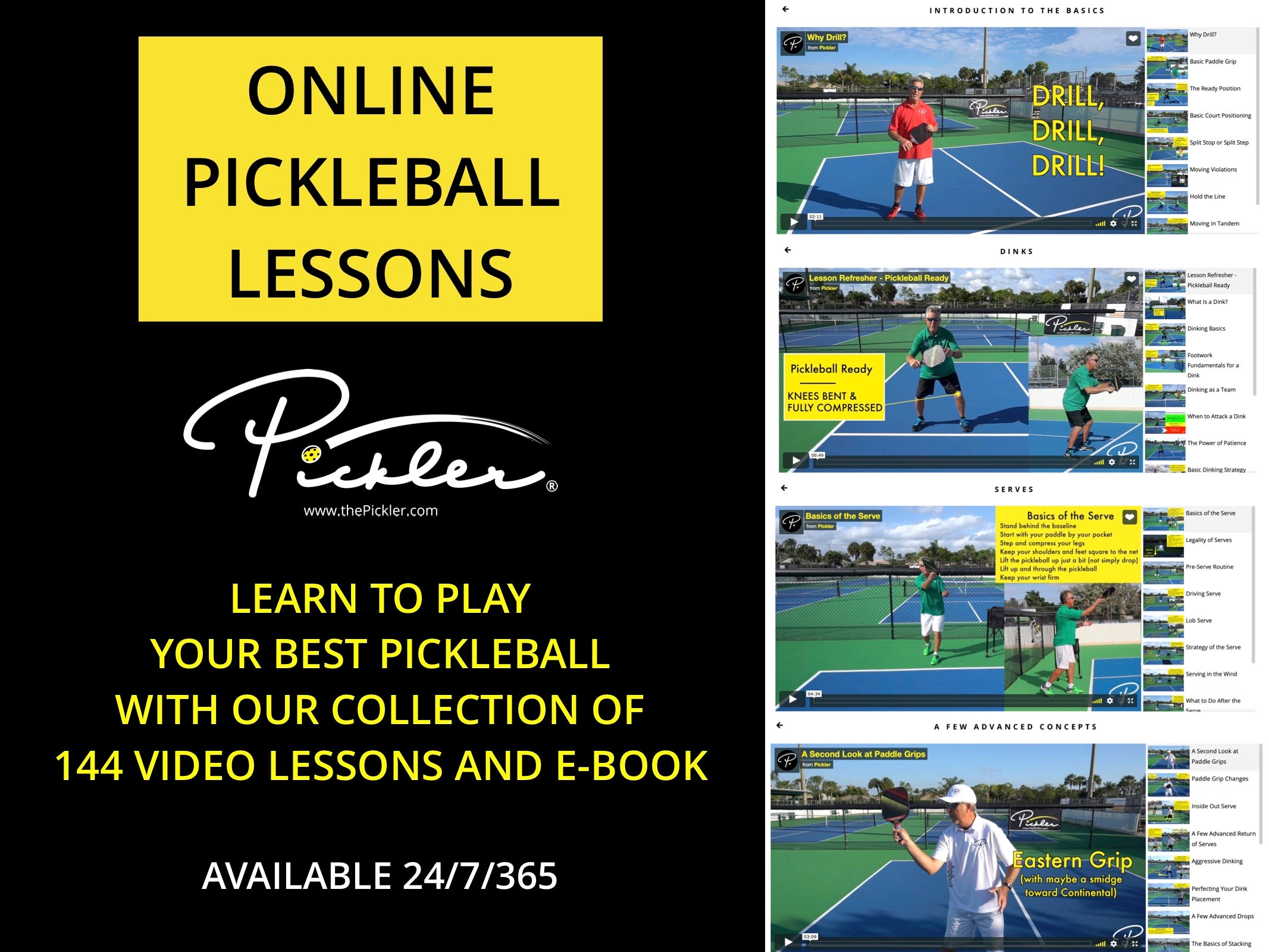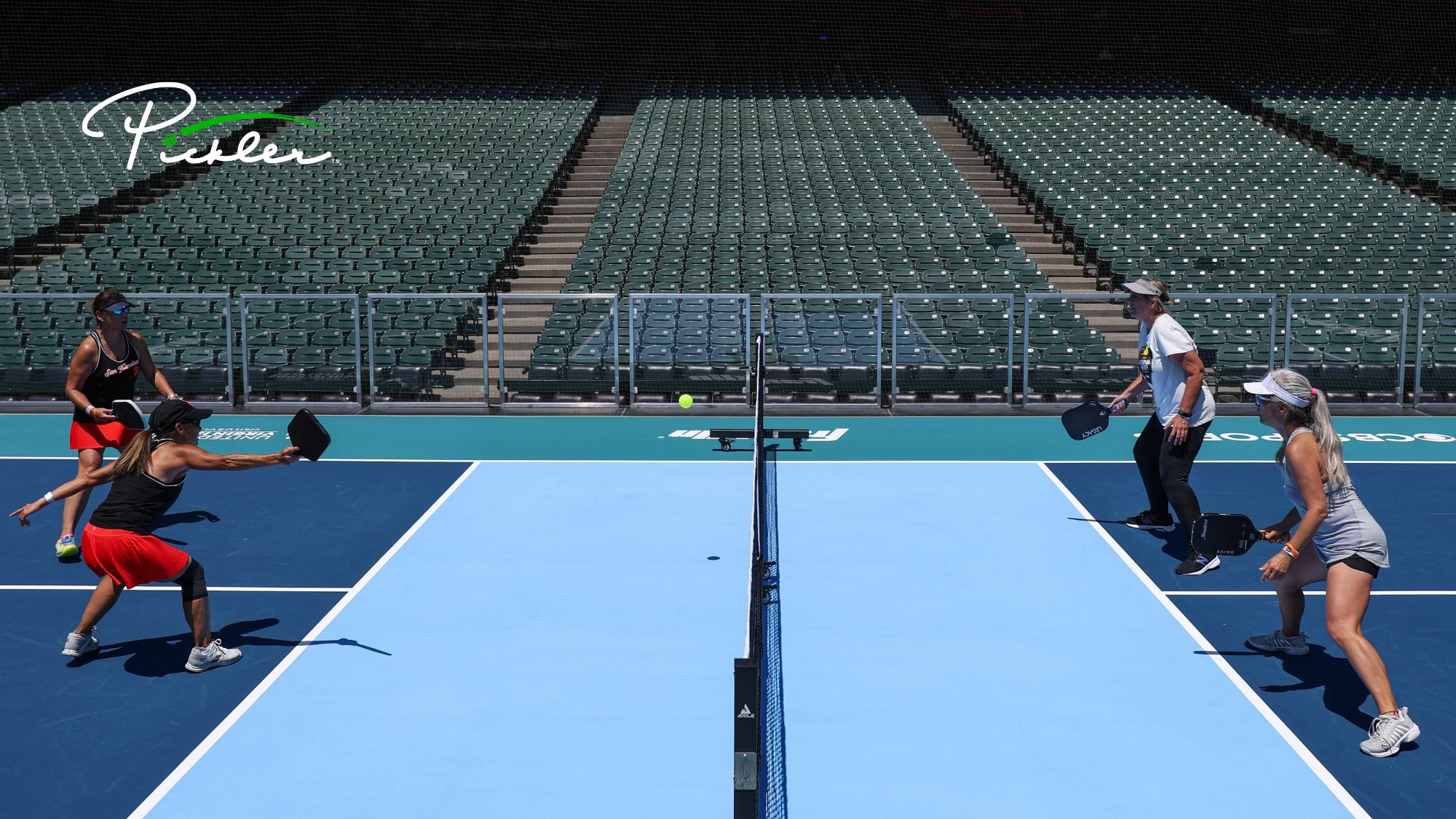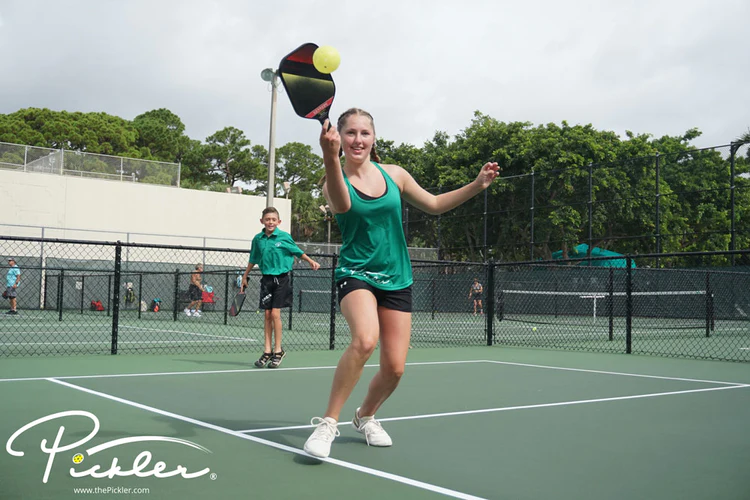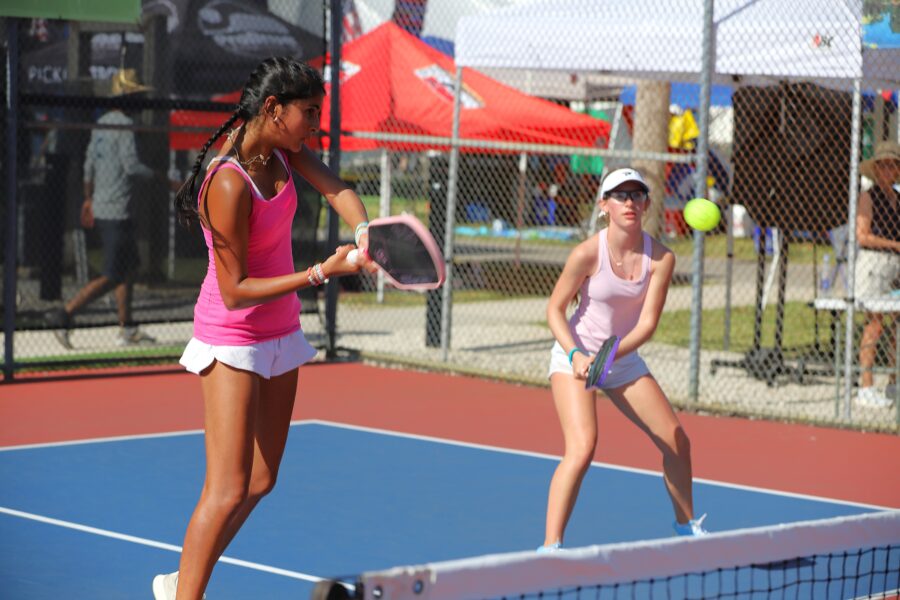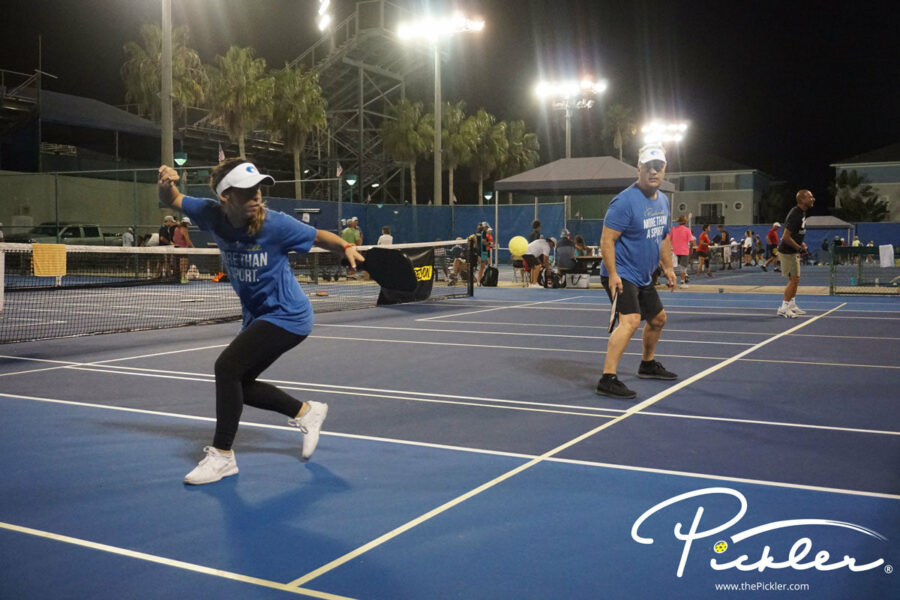Have you ever found yourself caught in a what feels like a tug-of-war between patience and aggression on the pickleball court? While initially patience and aggression seem to be opposites when it comes to pickleball strategy (defense vs. offense, precision vs. power, drive vs. drop), these two techniques complement each other perfectly. Knowing when to lean into each can be the key to disrupting your opponents and enhancing your performance on the pickleball court.
Patience in pickleball is all about waiting for the right moment to assert your dominance. Oftentimes, on the pickleball court, pickleball players want to go for a winning shot within just a few quick shots. This will likely result in lost rallies, as it is important to construct a point. It is better to wait for a shot from your opponents that you can attack—like a dink that sits too high. You must also remain patient within each stroke. Many unforced errors result from rushing a shot, as opposed to setting your feet, preparing your paddle, staying relaxed and engaged in your mind and in your body, and finishing your shot. So, be sure to remain patient both within a rally and within each shot you hit.
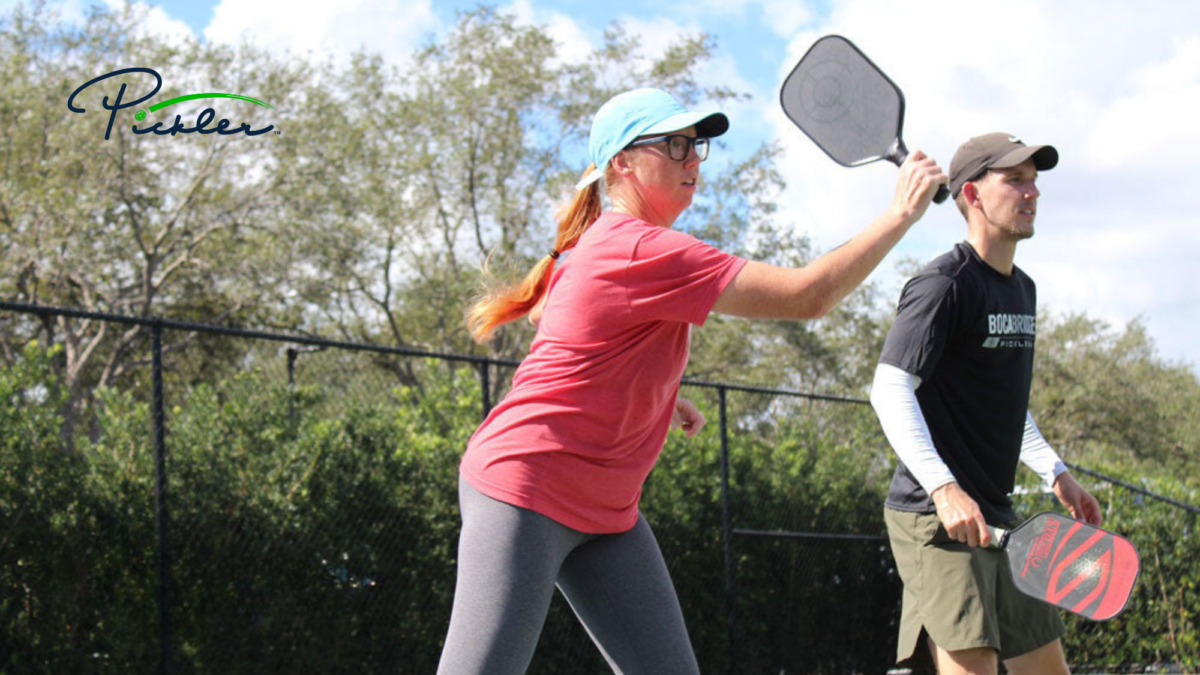
Aggression is all about applying pressure on your opponents—not just once, but continuously. Aggression does not mean that you need to drive, speed up, and bang every single shot. You can apply pressure by holding your court position and getting to the Kitchen Line, taking time away from your opponents, adding spin on your shots, effective shot placement, better reaction time, court coverage, and, of course, adding speed or power.
The key lies in finding the balance between these two strategies. Both patience and aggression are essential on the pickleball court, but knowing when to lean into each can be the key to enhancing your performance and, ultimately, securing a win.
Here are 6 tips to help you balance patience and aggression on the pickleball court:
1. Read the Game: Whether you’re playing singles or doubles, take a moment to assess your opponent’s tendencies before the match. Are they right handed or left handed? What are their weaknesses? What shots do they favor? If playing doubles, how does the opposing team interact with each other? These understandings can help inform your strategy and determine when to play it safe and when to strike.
2. Practice Controlled Aggression: Execute shots with both power and precision. Players often try to place the pickleball precisely in specific areas of the court, in an attempt to outmaneuver their opponents. Placement of your attack will be dependent on what opportunities you have on the pickleball court. For example, if the pickleball is hit high above the pickleball net you can hit down on the pickleball to be aggressive and offensive on your attack. Every pickleball player and every pickleball point is different, so it is important to evaluate the players and point in front of you. Remember, aggression doesn’t mean unchecked force and speed; it’s about choosing the right moment to push hard and apply pressure.
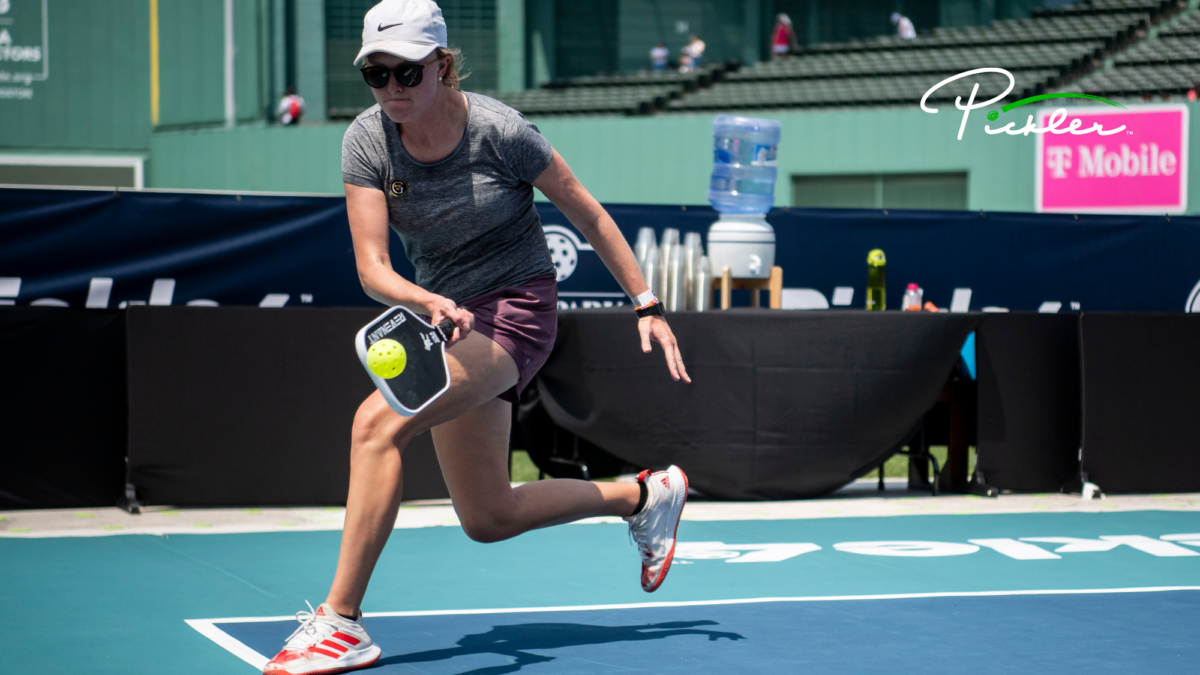
3. Use Spin and Speed Wisely: Whether its topspin, backspin, or sidespin, spin can be dangerous on the pickleball court and spin certainly adds pressure to your opponents. Where possible, add spin to your shots (whether dinks, drives, drops, serves, returns of serve, etc.). However, be cautious of which shots you add spin to. It is difficult to attack spin with more spin. In other words, if your opponents hit spin to you, be careful hitting your opponent’s shot with more spin. Hitting spin with spin is difficult to execute and can result in unforced errors.
Like spin, speed or power can put pressure on your opponents. Speed can be tough to handle (just ask any banger v. dinker match-up). However, like spin, speed should be used smartly. Every shot is not necessarily a great shot to speed up. For instance, if you speed up a pickleball that sits below the net, you risk hitting the pickleball into the net or out of bounds (as you will need to hit up on the pickleball to get the pickleball up and over the pickleball net). So, if you decide to speed up the pickleball, consider hitting down at your opponents’ feet or targeting your opponents’ hips or paddle-side shoulder, which can make for awkward spots to hit the pickleball.
4. Compress and Lean In: As we know, most points are won at the Non-Volley Zone Line. So, to win points, it is important to get to the Non-Volley Zone Line and hold the line. Balancing patience and aggression is crucial in this zone. Be aggressive with your feet to get you to the Non-Volley Zone Line (while remembering to split step every time just before your opponents strike the pickleball). Once you’re there, it is important to compress, stay low in an athletic stance, and be ready to react. Be ready to lean in to take balls out of the air, but be balanced at the same time, so that you can react to a lob over your head. Remember to be patient in the all important dink battles. Wait for the right opportunity and don’t be tempted by low percentage shots.
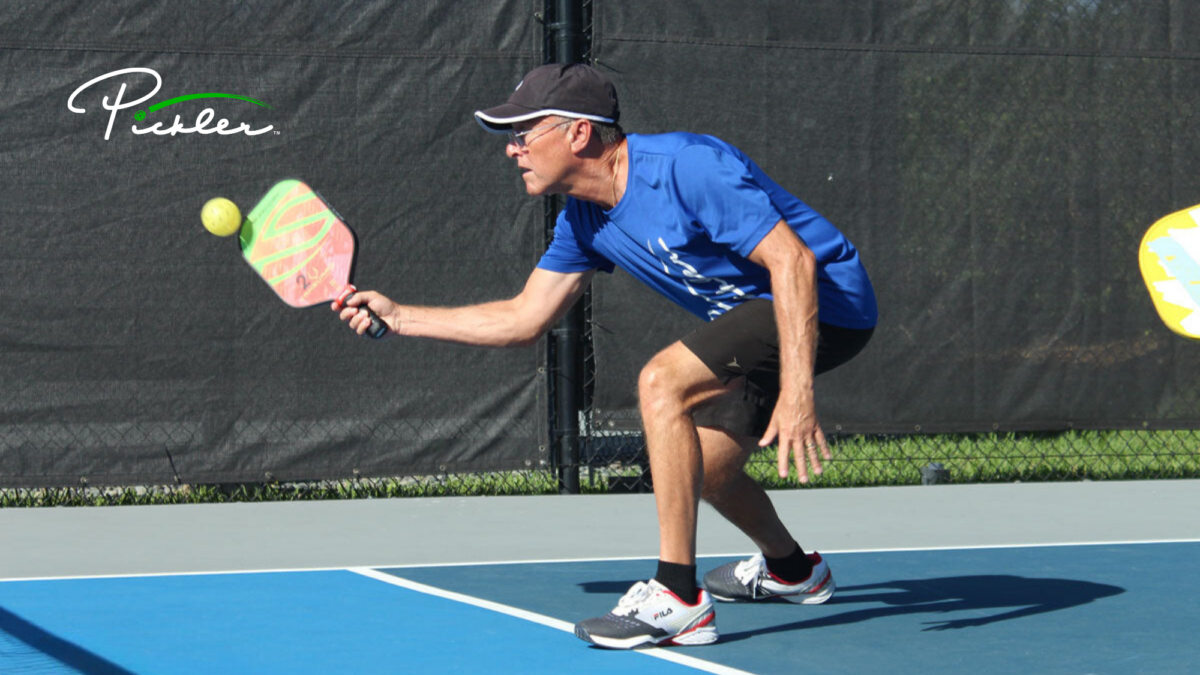
5. Stay Mentally Flexible: The ability to adapt your strategy in real-time is crucial. If you notice that using patience is yielding benefits, continue with that approach. Conversely, if you need to shift the momentum in your favor or your opponent seems shaky, take the reins and shift to more aggressive tactics. And, for that matter, remember to be patient over the entire course of a game. Pickleball is a game of momentum, so no matter how big your lead may be, or how far behind you may be, there is always time for a comeback. So, be patient in the course of a game and stay focused on every point until the game is won.
6. Reflect Post-Match: After each match, evaluate your decisions regarding patience and aggression. What worked? What didn’t? This reflection will help you to develop your instincts and improve your judgment for future games.
WANT MORE PICKLEBALL TIPS AND STRATEGIES?
Learn 3 pickleball patterns at the kitchen line to win more points!
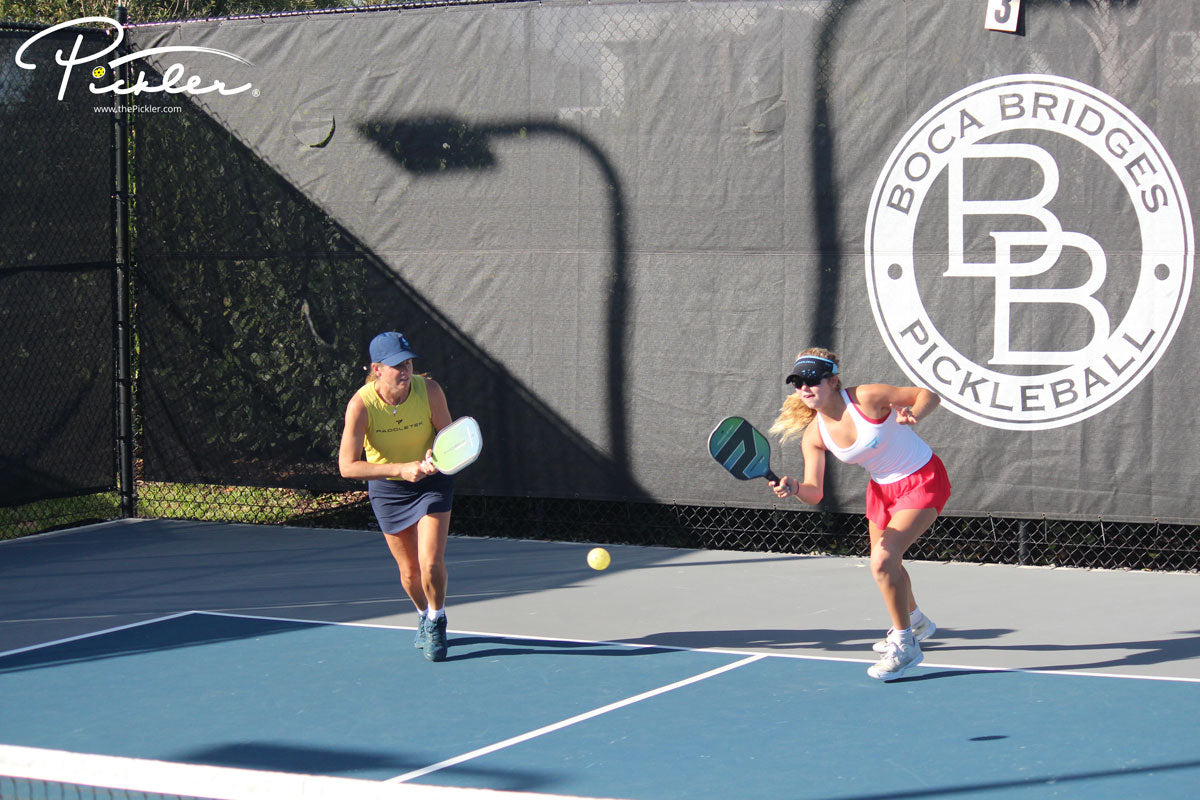
Plus, if you want more pickleball tips and strategies on every aspect of your pickleball game, check out Pickler’s online video lesson collection called My Pro Pickleball Coach. My Pro Pickleball Coach is a fraction of the price of one clinic or even one lesson, and features over 140 video lessons (over 7 hours of instruction!), as well as a corresponding e-book. These online video lessons are available on demand 24/7 and breakdown every aspect of the sport of pickleball, including pickleball drills, strategy, and advanced concepts, so you will play your best pickleball.
